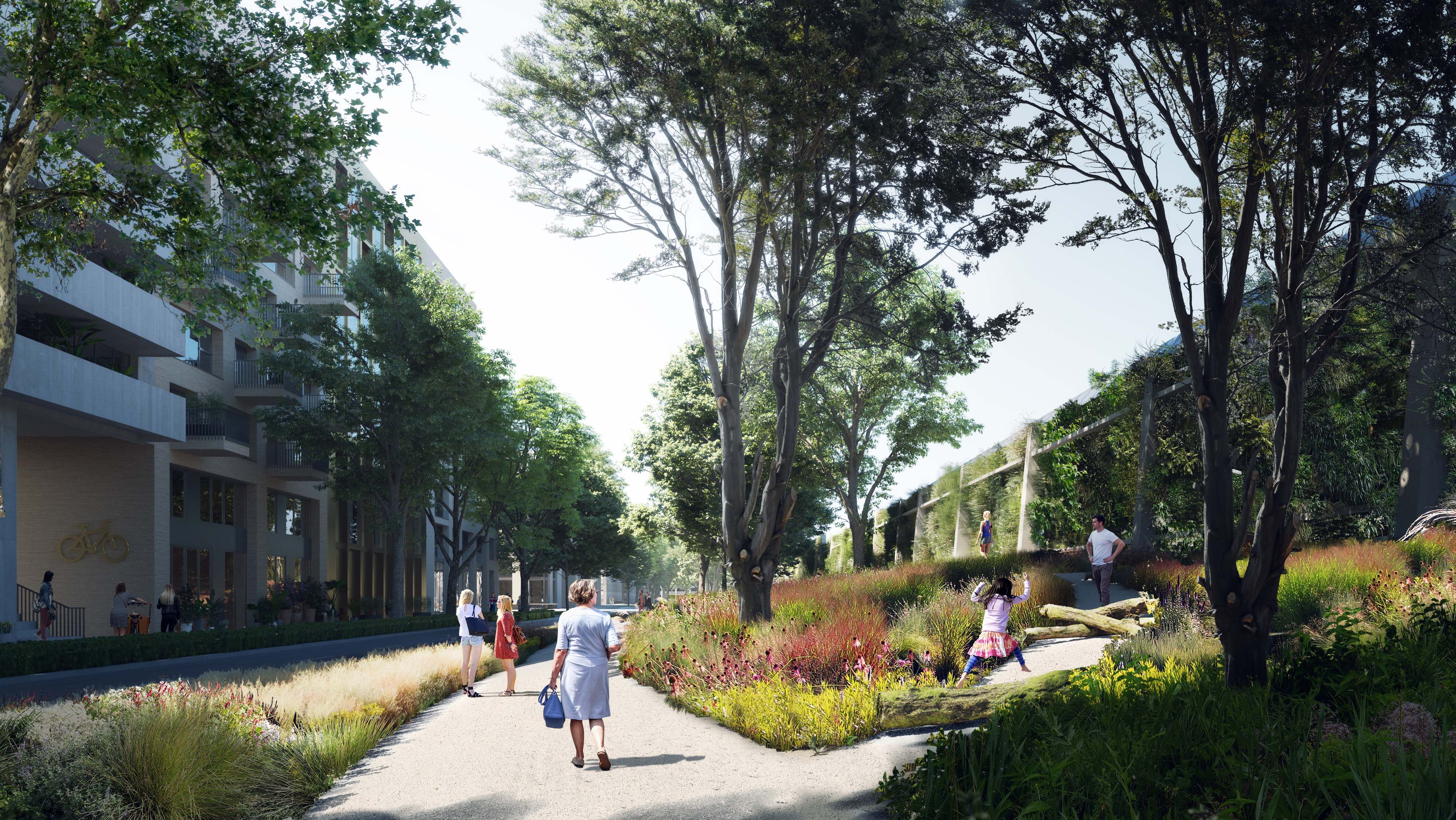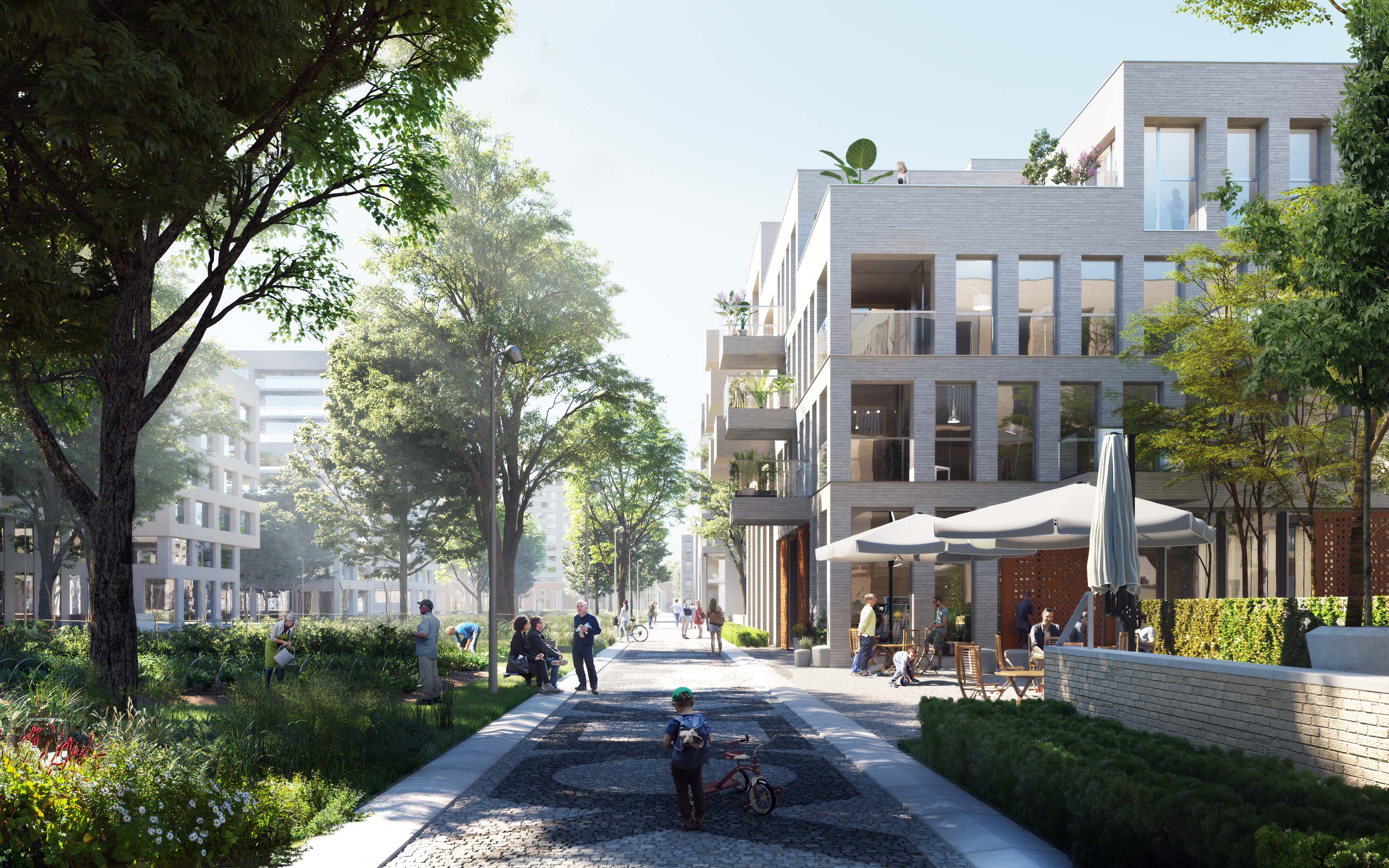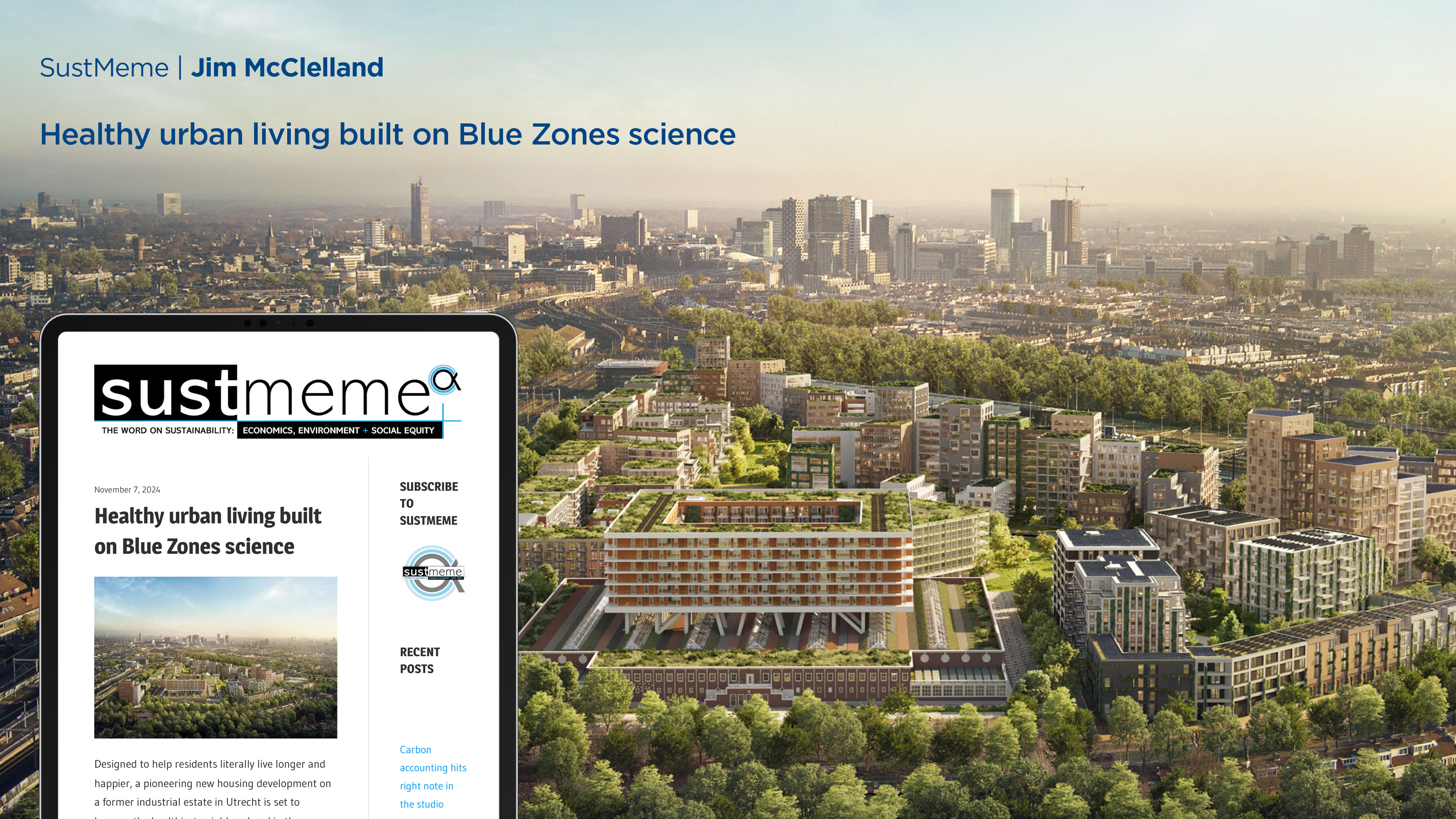For French, please click: Vie Urbaine Saine Basée Sur La Science Des Zones Bleues
Designed to help residents literally live longer and happier, a pioneering new housing development on a former industrial estate in Utrecht is set to become the healthiest neighbourhood in the Netherlands.
With over 2,800 houses, a park, school, supermarket, restaurants and other facilities, Cartesius Utrecht will be a bicycle-friendly beacon for urban living and biodiversity, sustainably well-served by public transport.
Offering direct train links into Amsterdam, the development is located beside Utrecht Zuilen station, on a former industrial site and marshalling yard for rail network operator Nederlandse Spoorwegen (NS).
The are development is based on the Direction Document jointly prepared by NS and the municipality of Utrecht. Retained at the heart of the new scheme is the historic CAB building, which dates back to 1949 and offers a striking example of the work of renowned Dutch railway architect Sybold van Ravesteyn.
From Blue Zones to bidirectional charging
Cartesius is inspired by the scientific theory of Blue Zones — places where people are proven to live longer and healthier lives. The fundamental development aim is to bring in lots of green (30%) and to keep most cars out of the scene, with the notable exception of 100 purposely introduced bi-directional shared vehicles.Bidirectional charging allows electric vehicles (EVs) to send power back to the grid, or onwards to other devices and appliances. These cars are essentially batteries on wheels and Cartesius has teamed up with automaker Hyundai and We Drive Solar to integrate this clean and green solution for sustainable mobility.
Actively engaging around future plans with neighbourhood representatives and other local stakeholders, Ballast Nedam Development and MRP Development are also working in close cooperation with four Dutch universities and other users to further develop the concept for healthy urbanisation in the area.

Penthouses and social provision side-by-side
The aspiration is for Cartesius Utrecht to become a lively and sustainable urban district, where walking and cycling are the main modes of transportation, plus all modern amenities can be found within easy reach.Car-free design gives residents more space, where they can recharge and their children can play outdoors.
The project will provide a broad spectrum of accommodation for a diverse mix of residents. Housing types include a luxury segment, as well as medium-rent options, plus 25% social. Some 165 new units are already under construction for social housing provider Portaal, as part of the Okinawa phase of the development.
Cartesius will showcase low-energy housing throughout, made of materials that can be reused or have less environmental impact, so contributing to the circular economy and shrinking the project footprint.
Designed by Paul de Ruiter Architects, for example, the Nicoya sub-area features 25 sustainable and spacious three- or four-bedroom townhouses, with French doors leading onto a private garden. In addition, there will be 52 apartments, including four penthouses with either gardens or balcony views over greenery.

Healthy Neighbourhood Covenant with the WHO
There are four overarching themes for Cartesius Utrecht: movement; healthy nutrition; community; plus, meaning and relaxation. Its trailblazing aspirations around health, in particular, will be benchmarked.During a working visit, a Building a Healthy Neighborhood Covenant was signed by the Cartesius consortium, consisting of developers Ballast Nedam Development and MRP, the Municipality of Utrecht, NS Stations, UMC Utrecht, Utrecht University of Applied Sciences, Utrecht University, Housing Corporation Portaal, Achmea Real Estate, and CBRE Investment Management.
This covenant aims to monitor the extent to which interventions in the living environment at Cartesius Utrecht impact the physical and mental health of residents, with before-and-after data. At a later stage, this pioneering monitoring programme could be scaled up to other area developments in the Netherlands.
During a trade mission undertaken by the Economic Board Utrecht (EBU) to Copenhagen, the World Health Organization (WHO) pledged to add Cartesius Utrecht into its Health in the Well-Being Economy programme, as part of WHO Healthy Cities. This aligns nicely with regional positioning for Utrecht Heart of Health.
Raising the bar for the built environment
The thinking behind Cartesius Utrecht is a perfect fit for business priorities across the built environment, too, where sustainability can save time and money, says Martijn Smitt, Executive Director Ballast Nedam:“The focus on sustainable development, both in construction methodologies and equipment, as well as the end-product, is becoming more and more important. There are three main drivers for this: firstly EU legislation; secondly, clients that are willing to pay for it; and thirdly, importantly, our own ambitions.
“In all of this, efficiency in our projects is key. On Cartesius, we saw a good example of the usage of prefabricated elements, which saved us large amounts of temporary structures and formwork.”
Ultimately, Cartesius Utrecht raises the bar, concludes Onno Dwars, CEO Ballast Nedam Development;
“Cartesius is not only unique for Utrecht or the Netherlands, but also internationally. In every aspect of the development, we apply the lessons that are supported by science and add new insights. The mix of different homes and amenities will contribute to a healthy, sustainable, and green new urban district in Utrecht.”

Source: Jim McClelland / SustMeme





